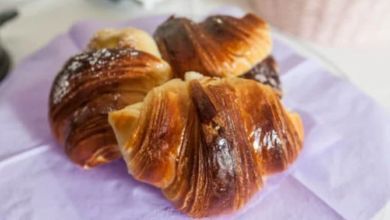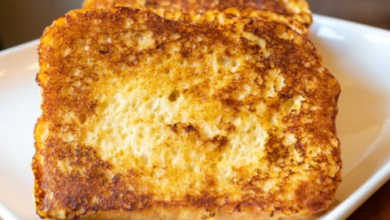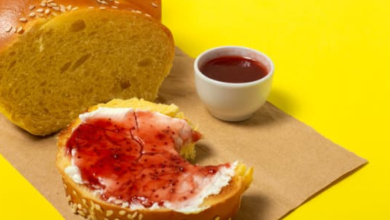Cornetto or Brioche: which will you choose?

What To Know
- Brioche is made with a high proportion of butter, resulting in a rich, decadent flavor.
- Cornetto is made with a laminated dough, similar to croissants, resulting in a flaky, crispy exterior.
- Croissants are made with a laminated dough, which involves folding butter into the dough multiple times, resulting in a flaky, layered texture.
Brioche, a classic French pastry, is renowned for its rich, buttery flavor and soft, fluffy texture. It’s a versatile dough that can be shaped into various forms, including the iconic twisted knot.
History and Origin
Brioche’s origins can be traced back to the 16th century in Normandy, France. It was initially a simple bread dough enriched with butter and eggs. Over time, it evolved into the luxurious pastry we enjoy today.
Key Characteristics
- Rich and Buttery: Brioche is made with a high proportion of butter, resulting in a rich, decadent flavor.
- Soft and Fluffy: The dough is enriched with eggs, creating a soft, airy texture with a slight chewiness.
- Golden Crust: Brioche is typically brushed with an egg wash before baking, giving it a beautiful golden crust.
Cornetto: The Italian Delight
Cornetto is an Italian pastry that resembles a crescent-shaped croissant. It’s characterized by its flaky, crispy exterior and a soft, airy interior.
History and Origin
Cornetto originated in Italy in the 19th century. It was inspired by the Austrian kipferl, a crescent-shaped pastry. Over the years, cornetto has become a popular breakfast staple in Italy.
Key Characteristics
- Flaky and Crispy: Cornetto is made with a laminated dough, similar to croissants, resulting in a flaky, crispy exterior.
- Soft and Airy: Despite its crispy exterior, cornetto has a soft, airy interior with a slightly chewy texture.
- Sweet Fillings: Cornetto is often filled with sweet fillings such as jam, custard, or chocolate spread.
Brioche vs Cornetto: A Comparative Analysis
Texture
- Brioche: Soft and fluffy with a slight chewiness
- Cornetto: Flaky and crispy exterior with a soft, airy interior
Flavor
- Brioche: Rich and buttery with a hint of sweetness
- Cornetto: Neutral dough that complements sweet fillings
Versatility
- Brioche: Can be shaped into various forms and used in savory and sweet dishes
- Cornetto: Primarily used as a breakfast pastry with sweet fillings
Dietary Considerations
- Brioche: Higher in calories and fat due to the high butter content
- Cornetto: Generally lower in calories and fat, but fillings can add extra calories
Which One to Choose?
The choice between brioche and cornetto depends on personal preferences and the occasion.
- For a Rich and Decadent Treat: Opt for brioche, which offers a luxurious flavor and texture.
- For a Flaky and Crispy Breakfast Pastry: Choose cornetto, especially when filled with your favorite sweet fillings.
- For Versatility: Brioche’s versatility makes it a great choice for both savory and sweet dishes.
Enjoying Brioche and Cornetto
Brioche and cornetto can be enjoyed in various ways:
- As a Breakfast Pastry: Pair them with coffee or tea for a satisfying morning treat.
- As a Dessert: Serve them with fruit, whipped cream, or ice cream for a sweet indulgence.
- In Sandwiches: Use brioche or cornetto as bread for savory sandwiches with fillings like cheese, ham, or eggs.
Key Points: A Culinary Delight
Brioche and cornetto are both exceptional pastries with unique characteristics. Brioche’s rich, buttery flavor and soft texture make it a luxurious treat, while cornetto’s flaky exterior and airy interior complement sweet fillings perfectly. Whether you prefer the French masterpiece or the Italian delight, these pastries offer a delightful culinary experience.
What You Need to Learn
Q: What is the difference between brioche and croissant?
A: Croissants are also French pastries, but they have a different dough and a distinctive shape. Croissants are made with a laminated dough, which involves folding butter into the dough multiple times, resulting in a flaky, layered texture.
Q: Can I make brioche or cornetto at home?
A: Yes, it’s possible to make these pastries at home with the right ingredients and techniques. However, it requires some experience and patience to achieve the desired texture and flavor.
Q: Which pastry is healthier?
A: Cornetto is generally lower in calories and fat than brioche. However, the fillings in cornetto can add extra calories and sugar. Both pastries can be enjoyed in moderation as part of a balanced diet.





